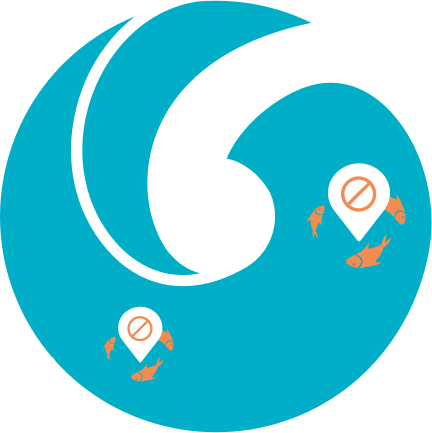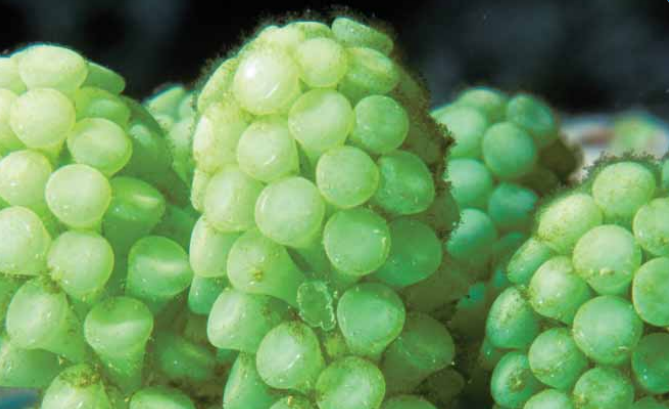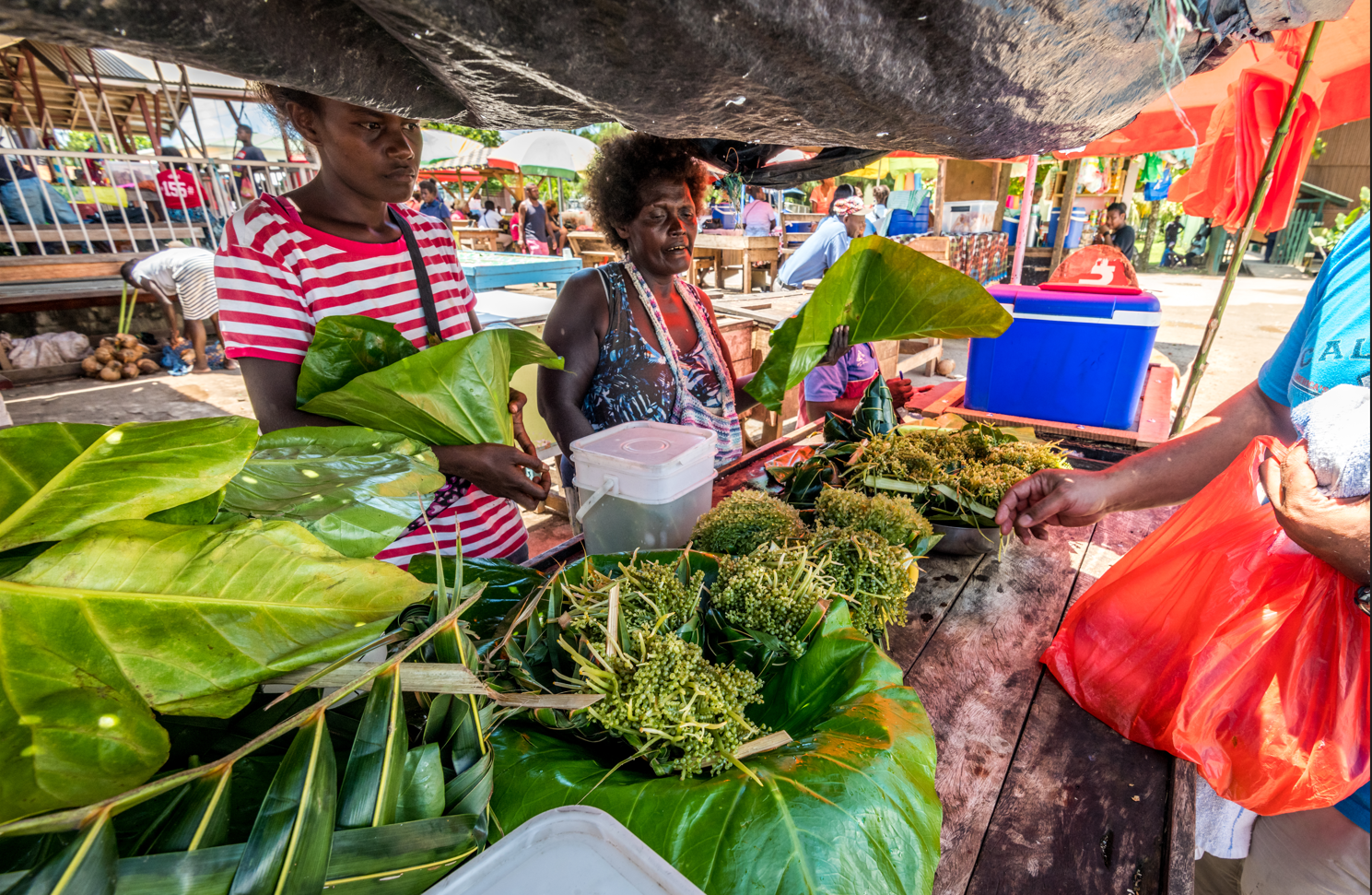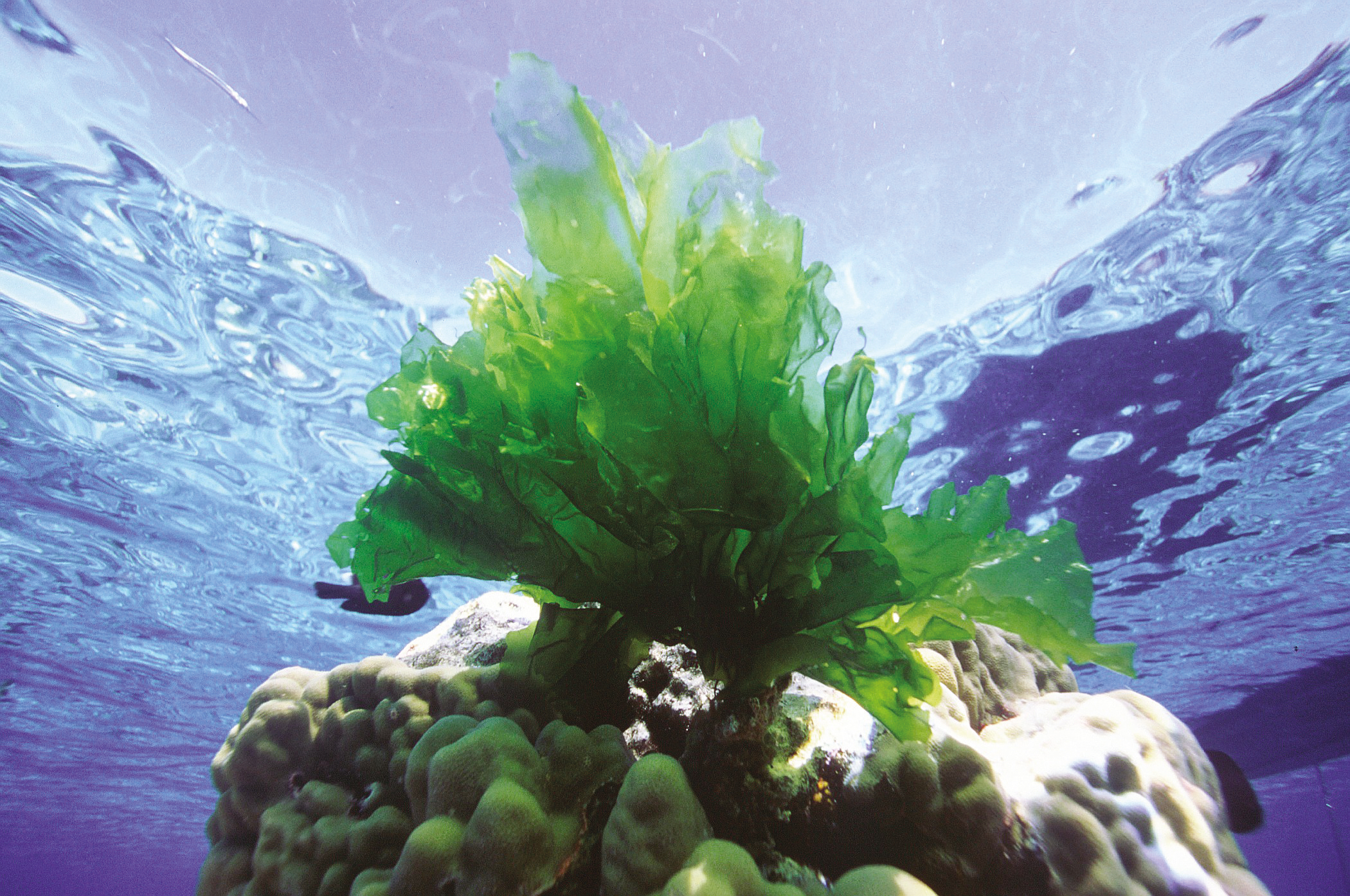Image: © IRD, Joël Orempuller
To gain access to full information on edible seaweeds, download the information sheet produced by the LMMA Network and SPC.
If you have noticed a decline in your catches or are concerned about edible seaweed populations, here are some priority actions the community can consider in addition to national regulations:
Fish smart rules
Quotas
Leave or replant part of each plant. Seaweeds such as sea grapes can regenerate from small parts of the plant left in the place where it was found or placed in nearby crevices in the reef. Village meetings and workshops could be held to encourage collectors to do this. In Fiji, women collecting sea grapes have traditionally collected only the upright grape-like shoots, leaving the horizontal stalks (or runners) to regenerate.


Temporary bans (rotational harvesting)
Establish rotational harvesting. A community fishing area could be divided into a number of smaller areas where seaweeds are collected in rotation. If there are three areas, for example, gathering seaweeds in one area could be banned for two months to allow plants to regenerate. Gathering seaweeds would continue in the other two areas during this time. Each area would be closed for two months in rotation.
Fishing methods
In Pacific Island countries, the collection and marketing of edible seaweeds is often an activity of women and the work may be shared among family and village groups. In some cultures, particular harvesting sites are used by families for many generations and their locations are kept secret.
Because they are found in shallow water, edible seaweeds are an important food resource when the weather is too rough for fishing at sea. Seaweeds are high in dietary fibres, low in fat and contain many vitamins and minerals.
Management measures in the region
There are no national management controls placed on the collection of seaweeds in Pacific Island countries and management is best left to fishing communities.
There are more than 500 seaweeds in the seas surrounding Pacific Islands and perhaps 20 percent of these are used as food. Only a few are mentioned here but a detailed guide is available from SPC.
Seaweeds have traditionally been used as food for humans and domestic animals, as medicines, and as garden mulch and fertiliser. All of the plants illustrated above - with the exception of the lime-encrusted Halimida which plays an important role in the formation of sediment and beach sand - are used as human food or flavourings for food. Sea grapes, glass weed, and maidenhair are widely used as food, and even the tougher plants such as Sargassum and funnel weed are used to make tea and soups.
Some non-native species have been introduced into the Pacific. Eucheuma and the closely related Kappaphycus have been introduced and are farmed in several locations for the extraction of carrageenan, which used as a thickening agent in products such as toothpaste and ice cream. A non-native species of maidenhair (hooked red seaweed, Hypnea musciformis) was deliberately introduced to Kane‘ohe Bay in 1974 for farming and spread rapidly throughout Hawaii. In addition to Eucheuma, there are several local seaweeds that have potential for farming.
Other than Eucheuma, the species shown in the figure occur naturally and are widely distributed in islands of the tropical Pacific. Some, such as maidenhair and glass weed, are found in sheltered back-reef areas while others, such as sea grapes, thrive in areas where there is more water movement.
Unlike land plants that gain nutrients from the soil through their roots, seaweeds absorb nutrients from the surrounding seawater. Some brown seaweeds, Sargassum in particular, grow rapidly when there is an abundance of nutrients in coastal waters, often during the wet season, and smother corals. This is especially a problem when marine animals that eat seaweeds (sea urchins, sea snails and plant-eating fish, such as rabbitfish), have been overfished.
Reproduction in seaweeds varies from species to species and is often complicated. In the simplest method of reproduction (called asexual reproduction) pieces of the plant break off and develop into new plants. Some pieces become broken off in storms and float long distances before settling and growing. All of these new plants are clones – that is they will be genetically identical to each other and the parent seaweed.
Seaweeds can also reproduce sexually by producing male and female plants called gametophytes which release sperm and eggs into the sea. After the eggs are fertilised they grow into new seaweeds.
Seaweeds can grow very quickly - under favourable conditions, some sea grape species, for example, grow approximately 2 cm each day. Some seaweeds are annual and die in less than a year; others can live for about ten years.
Related resources

To gain access to full information on Edible seaweeds, download the information sheet.

Community Fisheries Training Pacific Series

